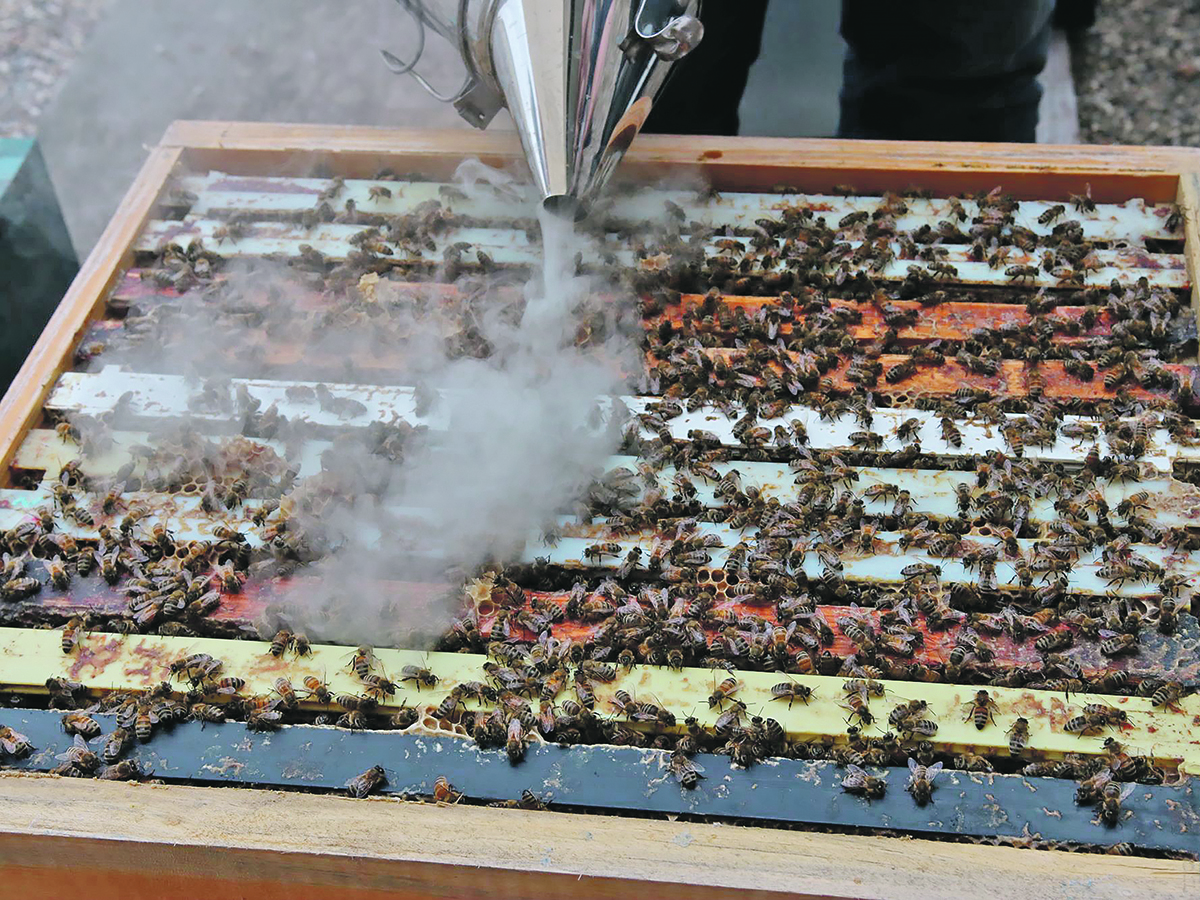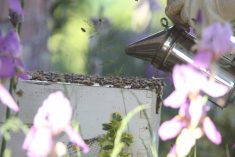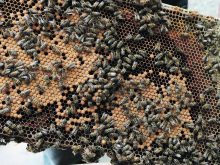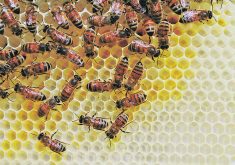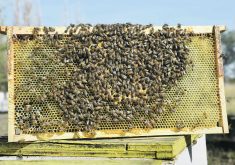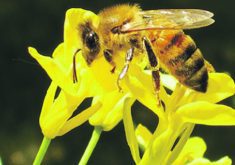Weather and production challenges reduced how much product was produced; beekeepers wary about coming winter
Glacier FarmMedia – Weather woes and disease caused honey production on the Prairies to drop significantly in 2024, especially in Manitoba and Saskatchewan.
Statistics Canada recently reported that Canadian honey production dropped by more than 18 per cent nationwide compared to 2023, though the number of beekeepers and colonies increased. Beekeepers across the nation drew just under 78.18 million pounds compared to 95.65 million the previous year.
2024 was one of only two years in the last decade when honey production fell below 80 million lb. The other was 2022, following a winter that saw 45.5 per cent colony loss, according to annual surveys by the Canadian Association of Professional Apiculturists.
Read Also
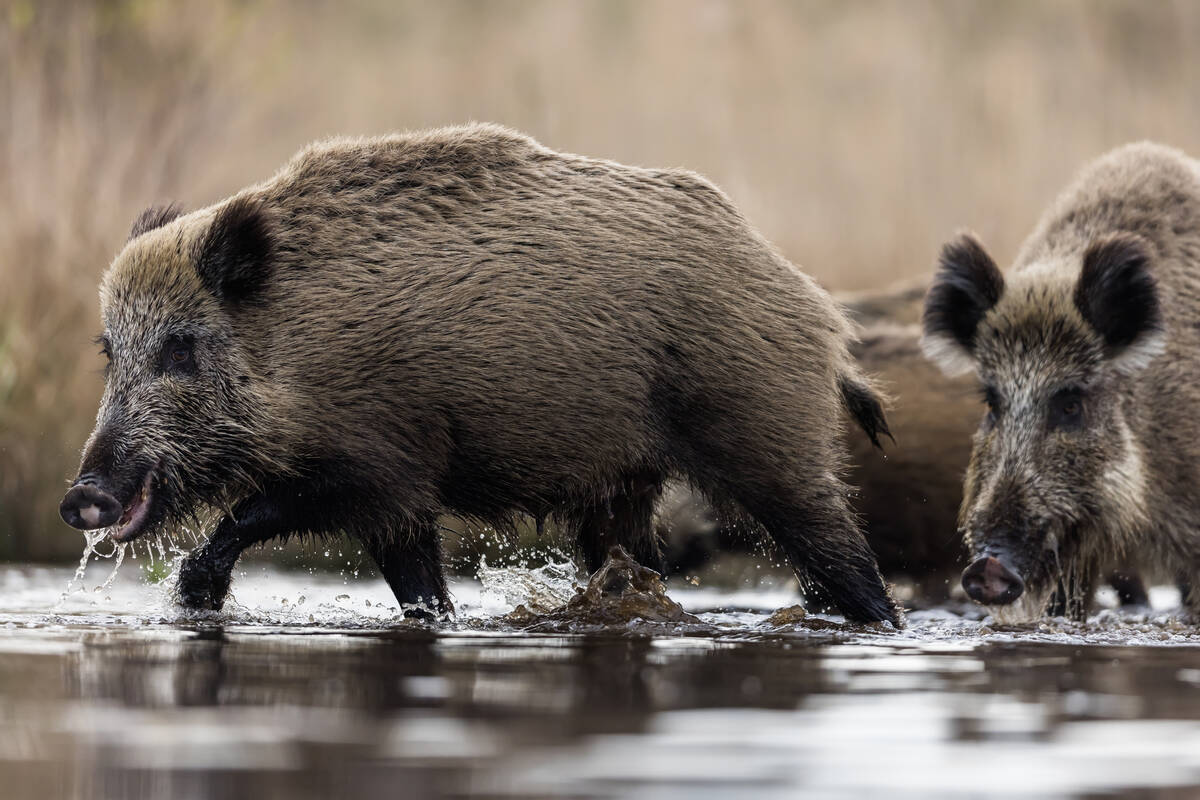
Manitoba bans wild boar possession
Manitoba has tightened the regulatory status of Eurasian wild boar in an effort to help fight back against invasive wild pigs.
Manitoba, which topped the nation in winter losses in 2022 at 57.2 per cent, drew even less honey in 2024 than it did two years ago. Local beekeepers took in 15.16 million lb. in the last 12 months, compared to 15.49 million in 2022. Compared to 2023, beekeepers harvested almost 22 per cent less honey.
It was the lowest honey harvest for the province since 2014, though Manitoba boasts 454 more beekeepers and 35,300 more colonies than it did then.
Beekeeping has been on a growth track in the province, with more people keeping hives every year for the last 15. In 2024, there were 1,000 beekeepers with 114,000 colonies, according to Statistics Canada.
Manitoba’s provincial apiarist, Derek Micholson, noted the difficulty of the year.
“We had some warmer weather in March, and the hives were getting going with brooding up, but then we had a bunch of different rainstorms, and the spring nectar flow just seemed to be quite limited this year,” he said.
The limited spring flow was seen across Manitoba, and the heat and precipitation of summer didn’t improve the situation, Micholson added.
“The heat, I think, was the biggest factor in the summer, and (it) just seemed to kind of burn out the canola crops, especially, and (the bees) just didn’t seem to get a big nectar flow off canola this year.”
Ongoing hive health issues, like foulbrood, other diseases and an increasingly tough fight against parasitic varroa mites, also made for a challenging season.
“It’s hard to pinpoint, but I think the bees just seem to be struggling to be healthy enough to get through the season,” said Micholson.
The drop in honey volume translated to $69.4 million less value nationwide from 2023-24. The value of Manitoba’s honey harvest hit a five-year low.
The last time honey yields dipped close to current levels in 2022, value was still around $50.75 million despite low yield. In contrast, the 15.16 million lb. of honey taken this year in the province was valued at $35.3 million. In 2023, Manitoba honey was worth an estimated $52.33 million, according to Statistics Canada
Micholson does not have a shining forecast for winter.
“Beekeepers are struggling. They’re having a hard time. We’ve had three bad winter losses over 30 per cent,” he noted, also citing losses reported in spring 2022, which he called “extreme.”
Some beekeepers left the business due to persistent issues, he noted. Others are “hanging on by a thread.”
“Beekeepers are really passionate about what they do, so they want to stay in it as much as physically possible, as much as they can, but they’re really starting to struggle to look for answers.”
Saskatchewan’s honey production shrunk even more than that of Manitoba. At just over 13.3 million lb. in 2024, it was almost 33.7 per cent lower than the prior year and the smallest harvest in the last 25 years, according to Statistics Canada.
That floor was previously held by 2022, when producers drew just over 13.46 million lb.
Geoff Wilson, Saskatchewan’s apiculture specialist, said the biggest fears over the winter revolve around varroa mites. He also cited the summer’s changeable weather for lack of honey flow.
“There was too much rain for good buildup, and then it got too hot and too dry in August for good production,” he said.
A similar story played out in Alberta, especially in terms of varroa infestation, according to Ryan Hicks, director with the Canadian Honey Council and member of the Alberta Beekeepers Commission.
“The mite levels in the fall were a little bit higher than we’ve seen in the past, and it was a little bit harder to get them killed off. I think it’s too early to tell, but yeah, guys are a little bit nervous,” he said.
Alberta, Canada’s largest honey-producing province, also dropped almost 3.5 million lb. of honey production between 2023 and 2024. At a volume of 33.33 million lb. harvested in the last 12 months, it was about 9.5 per cent less than the 36.82 million lb. reported in 2023.


